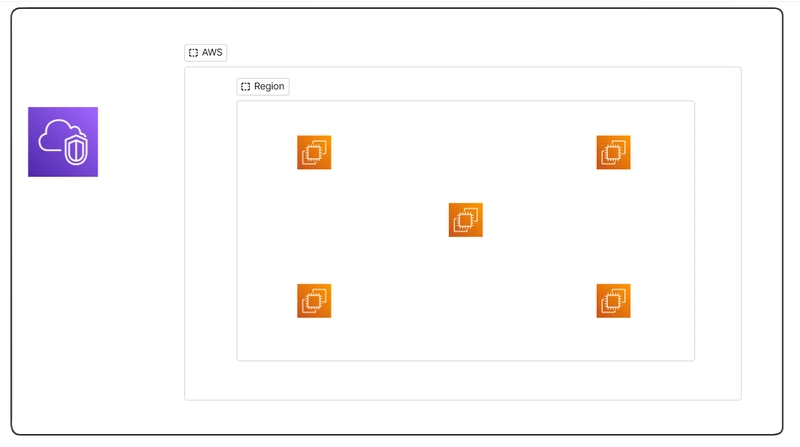Python API Frameworks Ranked by Speed
Are you ready to stop letting slow APIs hold you back? Every millisecond matters when your application is serving thousands—or even millions—of users. Today, we’re breaking down the performance of Python API frameworks, ranking them by speed and revealing which one might secretly be slowing you down. We’ll share raw speed benchmarks, compare asynchronous and multithreading approaches, and reveal which framework can handle extreme traffic loads. And if you’re looking for even more Python insights and resources, check out Python Developer Resources - Made by 0x3d.site—your go-to hub for all things Python. 1. Why Speed Matters in API Development Speed is more than just a metric—it’s the heartbeat of a responsive user experience. Whether you’re managing real-time data, streaming content, or handling complex transactions, every delay can mean lost engagement or frustrated users. info: “Fast APIs are not just about impressive numbers—they directly translate to happier users and better business outcomes. A well-optimized API can be the difference between success and mediocrity.” For instance, recent tests (refer to TechEmpower benchmarks) have shown that FastAPI can process up to 20,000 requests per second under optimal conditions. In contrast, Flask and Django may register around 10,000 and 8,000 requests per second, respectively, with Tornado coming in at roughly 15,000 requests per second. These figures are more than numbers—they’re a call to action to optimize and choose wisely. 2. The Contenders: Overview of Python API Frameworks Let’s meet the main players in our performance showdown: FastAPI FastAPI is the speed champion. Designed with asynchronous programming in mind, it makes the most of Python type hints and modern async features. This design enables it to handle high volumes of concurrent connections effortlessly. info: “In benchmark comparisons, FastAPI consistently outperforms many traditional frameworks, thanks to its async-first approach.” Flask Flask’s minimalistic design means there’s virtually no overhead. Its simplicity makes it a favorite for small to medium projects, although it might not always keep pace under heavy load without additional optimization. Django Django is a powerhouse with a complete ecosystem. Its rich features—from ORM to built-in security—come at the cost of additional overhead. While it may not be as swift in raw speed, its comprehensive toolset is ideal for large, complex projects. Tornado Built for real-time applications, Tornado’s non-blocking I/O model enables it to manage long-lived connections and high concurrency. Its speed and responsiveness make it a solid choice for applications where every millisecond counts. Other Frameworks There are niche frameworks that cater to specific needs or offer unique tweaks. While they may not always headline benchmark charts, they deserve mention for their innovative approaches. API Programming: Understanding APIs, Protocols, Security, and Implementations | using Wikipedia

Are you ready to stop letting slow APIs hold you back? Every millisecond matters when your application is serving thousands—or even millions—of users. Today, we’re breaking down the performance of Python API frameworks, ranking them by speed and revealing which one might secretly be slowing you down. We’ll share raw speed benchmarks, compare asynchronous and multithreading approaches, and reveal which framework can handle extreme traffic loads. And if you’re looking for even more Python insights and resources, check out Python Developer Resources - Made by 0x3d.site—your go-to hub for all things Python.
1. Why Speed Matters in API Development
Speed is more than just a metric—it’s the heartbeat of a responsive user experience. Whether you’re managing real-time data, streaming content, or handling complex transactions, every delay can mean lost engagement or frustrated users.
info: “Fast APIs are not just about impressive numbers—they directly translate to happier users and better business outcomes. A well-optimized API can be the difference between success and mediocrity.”
For instance, recent tests (refer to TechEmpower benchmarks) have shown that FastAPI can process up to 20,000 requests per second under optimal conditions. In contrast, Flask and Django may register around 10,000 and 8,000 requests per second, respectively, with Tornado coming in at roughly 15,000 requests per second. These figures are more than numbers—they’re a call to action to optimize and choose wisely.
2. The Contenders: Overview of Python API Frameworks
Let’s meet the main players in our performance showdown:
FastAPI
FastAPI is the speed champion. Designed with asynchronous programming in mind, it makes the most of Python type hints and modern async features. This design enables it to handle high volumes of concurrent connections effortlessly.
info: “In benchmark comparisons, FastAPI consistently outperforms many traditional frameworks, thanks to its async-first approach.”
Flask
Flask’s minimalistic design means there’s virtually no overhead. Its simplicity makes it a favorite for small to medium projects, although it might not always keep pace under heavy load without additional optimization.
Django
Django is a powerhouse with a complete ecosystem. Its rich features—from ORM to built-in security—come at the cost of additional overhead. While it may not be as swift in raw speed, its comprehensive toolset is ideal for large, complex projects.
Tornado
Built for real-time applications, Tornado’s non-blocking I/O model enables it to manage long-lived connections and high concurrency. Its speed and responsiveness make it a solid choice for applications where every millisecond counts.
Other Frameworks
There are niche frameworks that cater to specific needs or offer unique tweaks. While they may not always headline benchmark charts, they deserve mention for their innovative approaches.






































































































































































![[The AI Show Episode 143]: ChatGPT Revenue Surge, New AGI Timelines, Amazon’s AI Agent, Claude for Education, Model Context Protocol & LLMs Pass the Turing Test](https://www.marketingaiinstitute.com/hubfs/ep%20143%20cover.png)

































































































































![From drop-out to software architect with Jason Lengstorf [Podcast #167]](https://cdn.hashnode.com/res/hashnode/image/upload/v1743796461357/f3d19cd7-e6f5-4d7c-8bfc-eb974bc8da68.png?#)









































































































.jpg?#)































_ArtemisDiana_Alamy.jpg?#)




 (1).webp?#)
























































































![Yes, the Gemini icon is now bigger and brighter on Android [U]](https://i0.wp.com/9to5google.com/wp-content/uploads/sites/4/2025/02/Gemini-on-Galaxy-S25.jpg?resize=1200%2C628&quality=82&strip=all&ssl=1)













![New iOS 19 Leak Allegedly Reveals Updated Icons, Floating Tab Bar, More [Video]](https://www.iclarified.com/images/news/96958/96958/96958-640.jpg)

































































































































